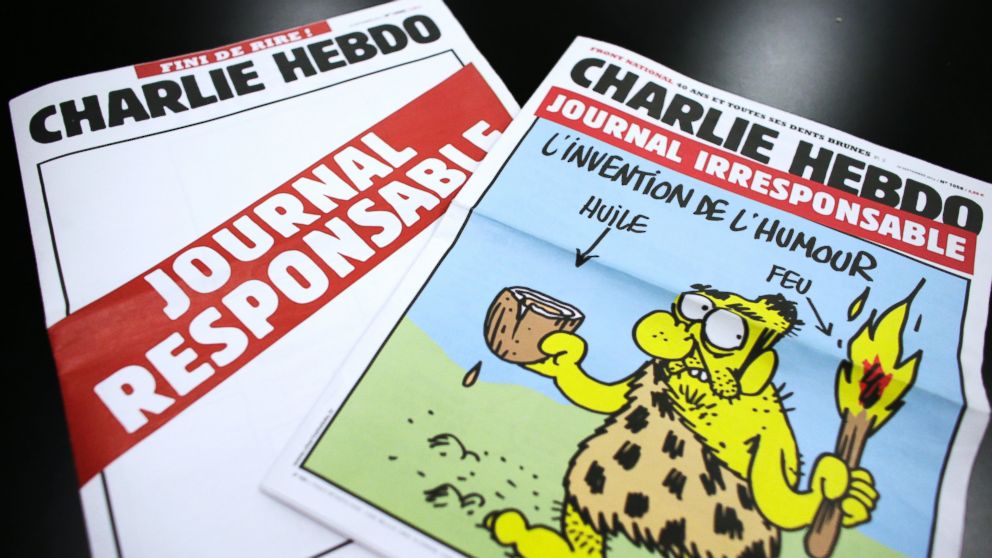Charlie Hebdo: A Profile of the Satirical French Newspaper
— -- The attack in Paris that killed at least 12 people today was an attack on the satirical newspaper Charlie Hebdo.
The French newspaper has long been the subject of threats -- and even attacks -- in its 50-year history. It even courted controversy in recent years by poking fun at the Muslim prophet Mohammed.
Among those killed were the magazine's longtime editor and a cartoonist, who had been with the publication since it first started.
12 Dead in 'Terrorist' Attack on Paris Satirical Magazine
The newspaper dates back to 1960 when an early version of the publication was started by Francois Cavanna and Georges Bernier. At the time, the weekly publication was called Hari-Kari Hebdo.
The publication aimed to poke fun at religious, government and popular figures and institutions. It was banned in 1970 after publishing a cartoon lampooning media coverage of a deadly fire, according to translated text from Charlie Hebdo's website.
To avoid the ban, the magazine’s name was changed to Charlie Hebdo and republished within weeks of the ban up until 1982, when it ceased publishing for financial reasons.
The magazine’s name refers to Charlie Brown from the popular cartoon “Peanuts.” Hebdo refers to the French word for weekly newspaper, hebdomadaire.
The magazine was revived in 1992 in its current form.
In 2006, the magazine republished an infamous Danish cartoon depicting the prophet Mohammed in a special issue. The magazine sold 400,000 copies, but was besieged by threats.
Rather than avoiding the controversial topic, the magazine published a special issue in 2011 with caricatures of the Prophet Mohammed, including one cartoon on its cover. The offices were later firebombed, but no employee was killed in that attack.
In 2012, the magazine again drew attention for publishing more cartoons of Mohammed, drawing angry rebukes from some in the Muslim community.
Police protection had been ordered at the magazine’s offices according to the French President Francois Hollande, but it appeared unable to stop today’s attackers, who were captured on video shouting “Allahu Akbar." At least two police officers were killed in the attack.
Some of those killed had a long history at the magazine, including the cartoonist Cabu.
But today’s attack took the lives of some of the magazine’s long-time contributors, including Cabu, who had worked with the magazine since its first iteration, according to the magazine’s website.
Stephan Charbonnier, the magazine's editor and also a cartoonist, had received death threats and lived under police protection, according to The Guardian newspaper.
Known as Charb, the editor had been with the magazine since 1992. Both Charbonnier and one of his bodyguards were killed in the attack.
The Associated Press contributed to this report




